Unlock the complete
Logicmojo experience for FREE
Sign Up Using
1 Million +
Strong Tech Community
500 +
Questions to Practice
100 +
Expert Interview Guides
Sign Up Using
Strong Tech Community
Questions to Practice
Expert Interview Guides
 Logicmojo - Updated Jan 11, 2025
Logicmojo - Updated Jan 11, 2025
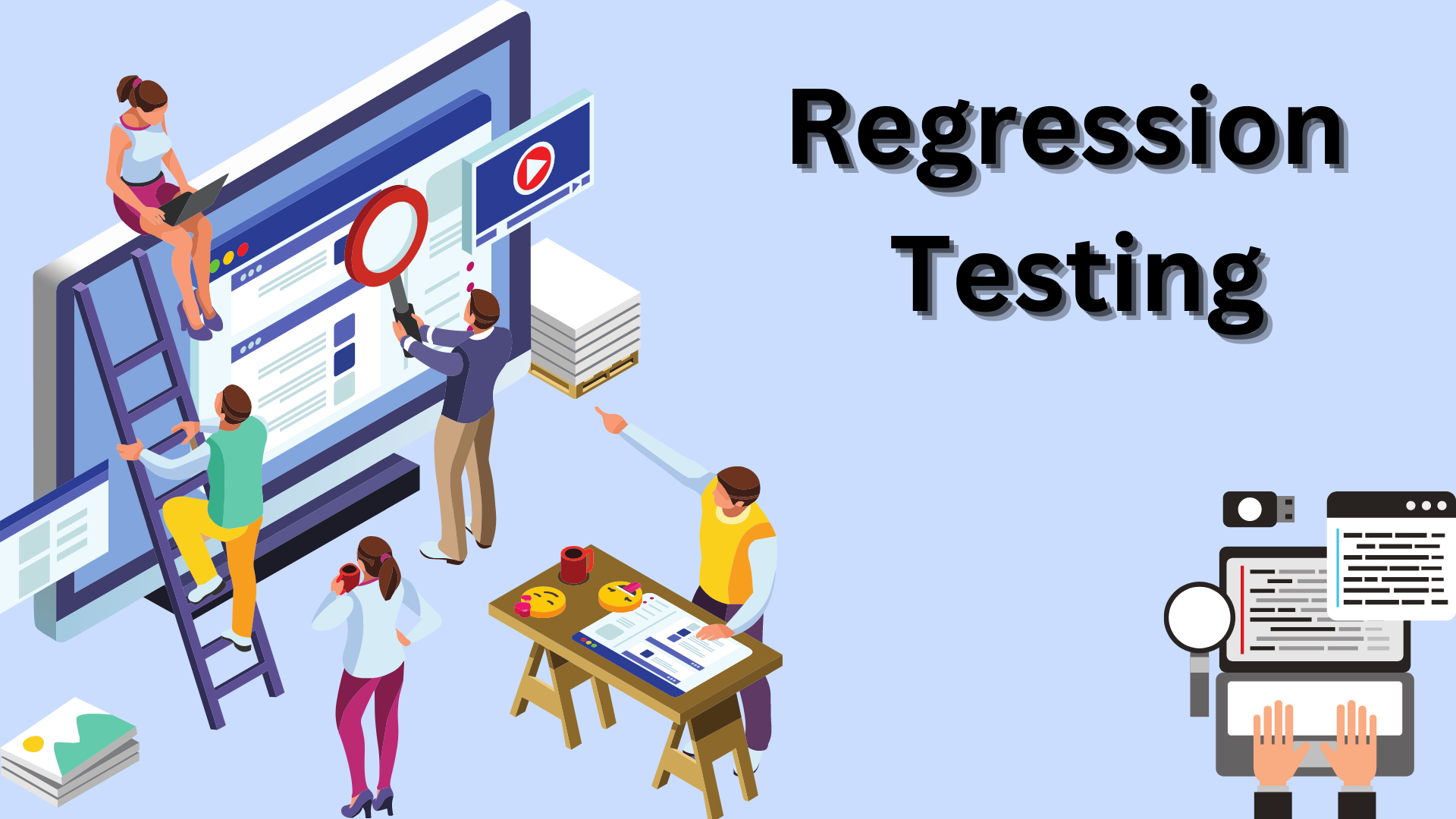
Testing is frequently ignored or not given the same importance in the software development lifecycle as development. The importance of it is equal to or greater than that of development, though, because a feature-rich program that is buggy can cost you money and user base erosion.
It might be challenging to introduce change into a sizable, cohesive code base. An software, web application, or website's current functioning may be affected by a new feature, bug correction, or enhancement. While unit tests and other automated tests aid developers in resolving this issue, this thorough guide on regression testing seeks to outline a different, more thorough approach.
Finding and fixing flaws is what software testing is all about. But frequently, even after a bug is corrected, other ones appear. Regression testing is then used in this situation. It makes sure that following a bug fix or a code update, new issues do not appear. Therefore, regression tests are carried out by all software product companies.
Regression testing is carried out after a software product has undergone changes, and it retests any portions of the product that may have been affected by the patch. By running a particular set of test cases (test scripts in the case of automation), this can be done manually or automatically. Regression testing, regardless of how it is carried out, is essential for producing high-quality software.
In this article, we'll go over regression testing in detail, including test cases, types, tools, and anything else you need to know. So, let's get this learning started!
 Learn More️
Learn More️
Regression testing is a method of testing software that replays non-functional and functional tests to confirm that a software program continues to function as intended following any code changes, developments, adjustments, enhancements, or optimizations. It is an essential component of the software development cycle because it allows developers to uncover unexpected flaws in an application that may appear as a result of tweaking, improving, or extending the existing codebase.
When software designers change or modify their code, even little changes can have unanticipated implications. Regression testing is the process of evaluating existing software programs to ensure that any changes or additions have not broken any existing functionality. Its objective is to catch bugs that may have been introduced accidently into a fresh build or release candidate, as well as to guarantee that previously eradicated bugs remain dead. You may ensure that any new modifications to an application haven't resulted in a regression or caused components that previously functioned to fail by re-running testing scenarios that were originally scripted when known problems were first fixed. On small projects, such checks can be performed manually.
However, it is normally too time-consuming and difficult to contemplate to repeat a set of tests each time an update is made, thus an automated testing tool is usually needed.
By monitoring the functionality of the existing features, regression testing ensures the overall stability of the software product. It is a necessary step following each new code modification to make sure the system can support and endure numerous upgrades.
Technically speaking, a change in the code may result in a change in dependencies, which could result in errors or malfunctions in the software. Regression testing is implemented to reduce these risks. It enables experts to check if the code that has already been created and tested continues to function when new features or code changes are implemented.
The existing code may be impacted by the introduction of new code changes, which could result in flaws or malfunctions in the software. Regression testing is used to guarantee that the previously produced and tested code remains functional when new features or code modifications are introduced, reducing potential risks.
Before the modifications are merged into the development package, a number of tests, including this one, are performed. The last step, regression testing, analyzes the general behavior of the product.
It has been noted that even a small change in the code might have a cascading impact and change a product's core functions. Regression testing is therefore essential in examining the architecture of the product, which is essential to identifying the fundamental reasons behind both the success and failure of the product.
Consider a product A that, among other things, has the functionality of sending emails when clicking the Confirm, Accept, and Dispatch buttons. There are some problems with the confirmation email, and some programming changes are performed to address them. To make sure that the modification in the code has not affected them, it is necessary in this case to test not only the Acceptance and Dispatched emails but also the Confirmation emails.
No programming language, including Java, C++, C#, etc. is required for regression testing. This technique of testing is used to check if the product has undergone any changes or upgrades. It confirms that a product's existing modules are unaffected by any product modifications.
Check to see if the bug has been fixed and whether the recently introduced features interfered with the software's prior stable version. Functional testing is done by testers whenever a fresh build is ready for inspection. This test's objective is to validate both the newly added functionality and the changes made to the existing functionality.
Once the test is complete, the tester should confirm that the functionality that was functioning prior to the modification is still functioning as intended and that no defects have been introduced by the new changes.
A typical scenario for regression testing operates like this. It's a plus that you have to check every tiny change in the code against the essential components of the product, but it's a minus that you know this and can plan for it. We have covered all the optimum circumstances for regression testing below.
Some software development teams attempt to get by without running routine regression tests, choosing instead to test crucial functions just once to make sure they function, and then move forward with the optimistic assumption that those functions will still function unless they are directly modified again if they do. This makes sense in a manner since it is instinctual to want to make a change, test it, and continue. Doug Hoffman and others have referred to performing functional tests or extremely detailed unit tests to check that a new software component functions as it should as "non-regression testing". However, when you're looking for a certain issue, it might be rather simple to locate it; what's more difficult is discovering all the issues you weren't expecting.
Again, it's crucial for developers and testers to always keep in mind that even tiny, seemingly inconsequential changes to an application's source code might have unexpected side effects and disrupt functionality that appear to have nothing to do with the new change. Regression testing verifies that your modification not only operates as you want it to, but also that it hasn't unintentionally broken features that had previously been tested and had otherwise functioned successfully.
For the benefit of those who want to test for regression, it is possible to construct regression test libraries from the test cases that have already been created from the beginning of any project. A regression testing suite can include functional tests, unit tests, integration tests, build verification tests, and anything else that has successfully verified that various components function as intended throughout the development process. "Regression tests," per se, don't necessarily need to be written.
You may simply re-run the possibly pertinent tests to make sure they pass after each change you make to your source code. These test cases—and the numerous functions and procedures they aim to verify—can, of course, number in the thousands throughout the course of a complicated development project, necessitating the usage of automated testing tools for comprehensive regression tests. You may easily construct continuous regression testing with TestComplete by reusing your earlier automated tests.
Sometimes a small change might have a cascading effect on a product's essential features that will require a lot of work to undo. Regression testing is a practice that supports the Agile testing methodology's continual iteration, integration, and testing of new code. To prevent a build-up of problematic code discovered close to the production date, frequent releases mean better and faster feedback loops. Simply put, CI/CD is a set of automated tests. The pipeline is designed to support the goal of enabling continuous testing while pushing or merging new code.

The scope of the investigation can be changed to focus on potential optimization opportunities. For instance, they could look for errors as well as chances to enhance the user experience.
Regression testing is required to assess the application's overall functionality following a recent change.
examines the upgrade's functionality
Ensures that the modification won't conflict with any already-existing features.
determines if there are any mistakes or faults in the application's current functionalities
It assists in finding issues in the recently pushed code.
Learn From Basic to Advanced Data Structures, Algorithms & Problem-Solving techniques in Java
1:1 Mentorship
4 Months Classes
LIVE Classes Weekend
Projects included


Learn From Basic to Advanced DSA, Problem Solving, Scalable System Design (HLD + LLD),Design Patten in Java
1:1 Mentorship
7 Months Classes
LIVE Classes Weekend
Projects included


Now we will look into more questions related to Reression Testing to know about differents types and how to perform it and many more things.
Regression testing is necessary whenever new features or improvements are added to an existing codebase or application. It guarantees that any added features or updates to a current application function flawlessly and without errors. There is a high likelihood of code incompatibility problems because developers and testers frequently struggle to track down every thread of code. Because of this, running Regression tests on their codebase (or application) enables them to find bugs earlier and release software with less risks.
Regression testing should ideally be carried out whenever a system's code is altered, including when new features, bugs, or performance enhancements are added. It is appropriate in situations where:
This occurs whenever new apps, websites, or modules are developed. Regression testing is done to determine whether the feature is operating correctly.
Regression testing is utilized whenever the system undergoes a significant change. To see if these shifts have had an impact on other characteristics, this test is conducted.
Regression testing is done by the developers when a bug is fixed in any functionality. This is done to see if the adjustments made to address the problem have had an impact on other connected features.
Regression testing is done to determine whether it has affected other functionalities after any performance issues have been resolved.
Every time the product interacts with a fresh external system, regression testing is necessary.
We must first debug the code to find the flaws before we can perform the Regression Testing method. Regression testing is carried out by choosing pertinent test cases from the test suite that cover both changed and affected portions of the code after the necessary modifications are made to address the defects.
Enhancements, bug fixes, optimization, and deletion of current features are all part of software maintenance. The system might not function properly as a result of these adjustments. Regression testing is therefore required. Regression testing are often carried out by test engineers using specialized strategies and procedures.

Building a strong regression test requires understanding the implications and risks of the most recent code change. Conduct code review sessions to pinpoint the altered parts or modules and their effects on the current functionality. This can be accomplished by comparing the differences between the old and new code using a version control system, such as Git.
In this step, QA teams debate which changes require thorough testing and which can get by with only minimal testing. The most important changes should always be those that have an influence on the application's basic functions or fundamentally affect how it functions.
Setting priorities becomes more crucial as the size of the codebase grows. It could take months or an entire sprint to finish all the tests, depending on how many there are. Regression testing is always the front-runner when discussing the manual vs. automation testing debate.
On the basis of the source code-modified module, the test cases that need to be run again are then chosen. In this case, testing the whole test suite is not necessary. Test cases are divided into reusable and obsolete categories after selection, with the reusable ones being prioritized for regression testing. The outdated ones, on the other hand, are not used in subsequent testing cycles.
To ascertain their impact on the test case execution time, test case factors include test data preparation, regression test designs, etc.
The test cases are divided into automatic and manual ones in this step. Test cases that are automated run more quickly than manual instances handled by people. In the automated situation, the test code can also be used again. Thus, classifying test cases is an essential stage in the regression testing process.
Manual vs automated regression tests: Manual testing and human evaluation still make the most sense for one-off or non-repetitive test cases. Anything that requires repeating the same set of testing procedures ought to be automated.
Critical vs non-critical features: Test cases are rated for urgency and significance, and then given a value of importance (high, medium, or low), depending on whether they have crucial or non-essential features. Depending on the needs of the organization, additional criteria may also be taken into account.
In this stage, the test cases are sorted in order of high, medium, and low relevance. Priority is given to urgent test cases during evaluation, then those of medium and low relevance. In essence, the value of the product and user participation determine priority.
Following factors are used to determine priorities:
Priority 0: Crucial test cases that incorporate all mandatory components
Priority 1: Features that are not necessary but nevertheless hold some significance.
Priority 2: Test situations involving complex technological issues
The last step is to individually run each test case at the right time to see if the product functions as planned. Depending on the needs and requirements, either automated testing or manual testing can be used here. Automated technologies like Watir, IBM Rational Functional Tester, and Selenium can assist test case execution go more quickly.
For efficient software quality assurance, regression testing, and specifically several regression testing approaches, can be used:
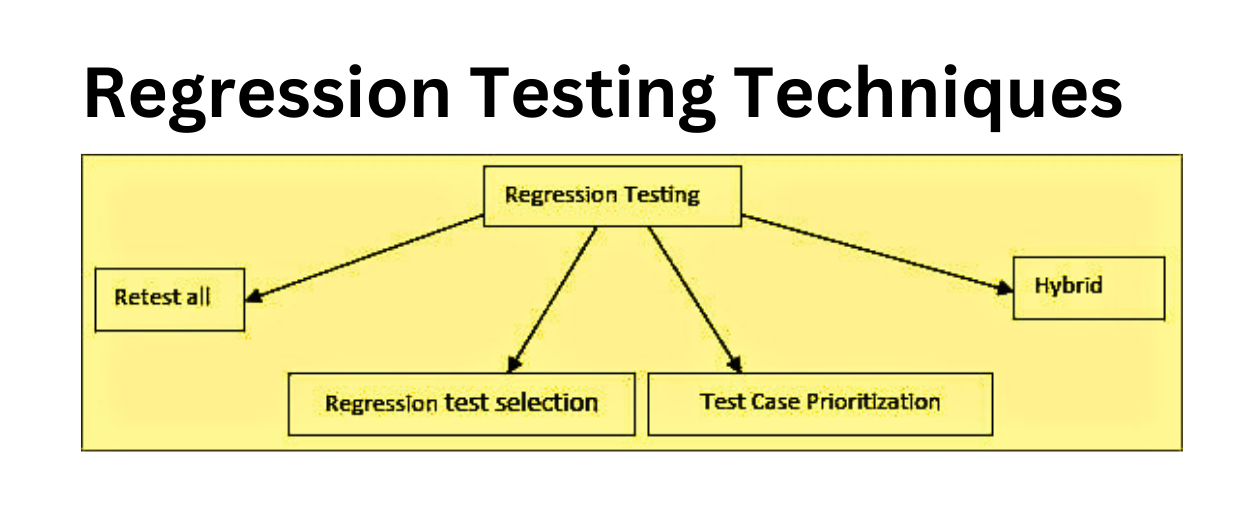
Retest all
Regression Test Selection
Test case Prioritization
Hybrid
As the name implies, all test cases in the test suite are run again to make sure that no issues have appeared as a result of a change in the code. As compared to the other procedures, this one is more time- and resource-intensive, making it more expensive.
This approach involves picking a few test cases from the test suite to run again. Not that every command in the suite has been repeated. On the basis of the module's code update, test cases are chosen. Reusable test cases and obsolete test cases are the two categories into which test cases fall. While obsolete test cases are not used in forthcoming regression cycles, reusable test cases can be used in them.
Here are some tips for finding reusable test cases:
are prone to error
Check an app's functionality.
contain characteristics that users may see
a recent source code modification
been carried out effectively in the past
had already failed testing stages
have integration-related content
have a connection to boundary-value
High priority test cases are executed ahead of medium and low priority test cases. The test case's criticality, impact on the product, as well as its functionality and frequency of usage, determine its priority.
The hybrid approach combines test case prioritization with regression test selection. Choose only the test cases that are repeated based on priority rather than choosing the whole test suite.
The hybrid approach is the most effective of these all. This is due to the fact that you execute the necessary test cases dependent on whether you want to initially perform regression test selection or test case prioritization, rather than picking them all at once. As a result, it saves a great deal of time and energy.
The majority of issues discovered in the production environment are the result of changes made or bugs resolved at the last minute, or adjustments made at a later stage. The final stage's bug repair may introduce new problems or bugs into the final product. Regression testing is crucial before a product is released because of this.
For your application to function properly across all browsers and operating systems, end-to-end testing is essential. Nevertheless, it has been found that a significant amount of flaws enter a program during the deployment phase. Due to the potential for increased turnover and a poor customer experience, this could be crucial from the perspective of the consumer. As a result, it's crucial to carefully choose the test cases based on the needs of the client.
The procedures for choosing regression test cases are as follows:
Choose test cases with a high bug rate: Sometimes, a straightforward code change can render an application completely unusable. As a result, while choosing test cases that include common errors, testers should bear these aspects in mind. Additionally, they have the option of selecting the test cases based on their past knowledge of and expertise with the Regression test cycle.
Choose test cases that have important fundamental features: Testers should first concentrate on selecting test cases that cover the critical core features of an application in order to guarantee that the program runs without a hitch across a variety of platforms. For instance, an e-commerce program needs to provide a variety of payment options, easy website navigation, robust search capabilities, etc.
Choose test scenarios that have received recent code updates: The likelihood of errors increases and code must be updated more than once when new code or features are added to an application. As a result, it's crucial to order test cases by importance and pick those that involve frequent codebase updates.
Choose test scenarios based on the user interface: The areas that users may see must be taken into consideration while choosing test cases. The brand logo, graphics, button wording, and other elements are visible components of the user interface. These concerns, however low on the priority list, are very important from the user's point of view.
Choosing test scenarios for integration: End-to-end testing makes that a program functions properly on many platforms. There may be situations where the functionality of one component depends on another. For instance, the behavior of component C1 may change if component C2's function depends on C1 and C2 is changed. Regression testing of these vulnerabilities is therefore essential to confirming integration-based test scenarios.
Choose challenging test cases: Poor performance and app crashes might come from the execution of complex test cases. To test complexity and make sure all complicated test scenarios are covered, testers must employ a variety of methodologies.
Tests based on risk should be used: In the risk-based testing approach, testers rank the test cases according to the most recent code modifications, which cuts down on Regression time and effort.
You can implement many sorts of regression tests, depending on your Software Development Life Cycle (SDLC) and the new feature or update you intend to deliver. To select the appropriate regression test, it is necessary to comprehend the various types available. The various regression test types are listed below:
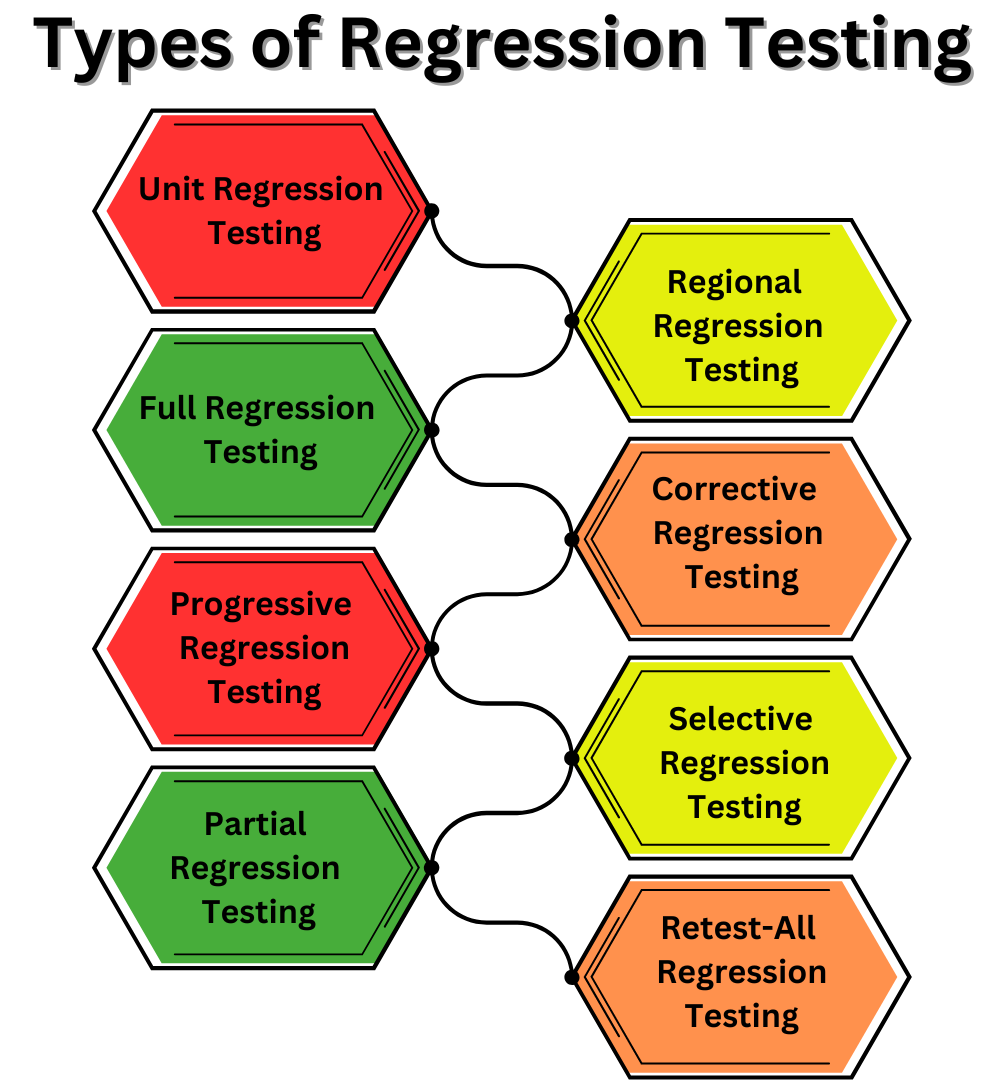
This is a very targeted method where the impact region is not included in the regression test but only the modified part is. In this approach, none of the module's other components are impacted.
Let's Understand by an Example
Imagine you have a straightforward calculator program that can perform addition, subtraction, multiplication, and division as well as other fundamental arithmetic operations. Although you have previously given the calculator a thorough test, a new function that enables the computation of square roots has been introduced. You should run regression testing before publishing the upgraded version of the calculator to make sure all the features still working as intended.
You can check to see if the calculator's existing arithmetic operations have been impacted by the inclusion of square root capabilities by running these unit regression tests. If any of the test cases fail, it might be necessary to resolve a regression bug before the revised version is made public.
The areas of modification and impact are assessed during regional regression testing. To determine whether any dependable modules might be impacted by the changes, this area is evaluated.
Let's Understand by an Example
Consider an online store that has operations in several continents, such as North America, Europe, and Asia. Any updates to the website should be checked to ensure they do not harm any functionality that is specific to a particular region because each one may have different requirements or configurations.
You may prevent modifications or upgrades to the e-commerce website from introducing problems that are unique to particular regions or setups by performing regional regression testing. It aids in preserving the general functionality and user experience for clients in various nations.
Problem
Clients frequently request adjustments, revisions, and new features in build 1.
The development and testing units are then informed of this request.
The modifications are then made by the development team. The test engineer then sends the client an email outlining the regions that the adjustment will affect.
The test lead then compiles a list of the affected areas using information provided by the client, developers, and testing department.
The test engineers then receive the impact list and begin running regression tests.
There are communication gaps caused by this testing methodology. There is no enough overview of the affected area because the developers and the clients cannot always respond to the emails.
Solution: Once the new build is released with bug fixes, new features, and tweaks, the testing team can schedule a meeting to address this type of issue. This meeting will be convened to talk about whether the alterations had an impact on the modules.
A test round will be conducted to identify impacts in order to compile a list of those impacts. The test lead expands this list with the most impact regions possible. Here is an example of what the procedure will look like:
"Build verification test" to validate the application's primary functionalities.
every new functionality is being tested.
examining newly added or modified features.
bug testing again.
Impact area analysis utilizing Regional Regression testing is performed next.
This testing includes all of an application's features. As a last check before launching, full regression testing is typically carried out in later versions following the initial or first two releases. The clients request three or more adjustments, demand new functionalities, and raise bugs in the second or third build. The testing unit then does an impact analysis, makes all the necessary improvements, and then tests the finished product completely.
For instance, the fourth build is the launch's last release. Therefore, rather of testing just the impact area or a feature in this build, the testing unit tests or retests the entire product. After the changes and tests in builds 1, 2, and 3, this is carried out.
You must take into account the following factors in order to accomplish regression testing:
if any alterations are made to the product's original file. For instance, the entire program used to create the application will be examined if the root file of the app is modified.
if a lot of modifications are made.
When there hasn't been any source code modification to your application, corrective regression testing is a good choice. Instead of creating new test cases, you will test the existing functionality in order to determine whether the current system is functioning as intended.
As the name implies, in selective testing, the test coverage is restricted to a chosen subset of already-created test cases. So, you merely test the selected components rather than the entire system again.
The best option for changing the testing requirements and creating new test cases will be progressive testing. This kind of testing is typically chosen when adding a new component to the system. This is because it enables you to confirm that adjustments do not negatively impact the original components.
To evaluate the impact of including new components in the system, partial testing is conducted. How, for instance, a new line of source code would impact the system. In contrast to selective testing, this type tests both new and existing functionalities. In this manner, you can evaluate their effect.
The major goal of this testing is to run through each test case again to ensure that there are no issues caused by changes to an application's source code. Compared to other forms, this type of testing requires a lot of the QA team's time and energy.
You now have a better understanding of the many regression testing services the QA team may offer. However, people now rely on a variety of technologies for regression testing because of automation.
Regression testing can be carried out and optimized by an IT team using a tool or platform. Testers can use script automation and start smoke and regression tests with the aid of a test management tool. A regression testing tool typically leaves QA with some level of manual test effort.
The market for regression testing tools offers products that support various programming languages, CI servers, and consequently the CI/CD process. The market also includes expensive commercial tools as well as low-cost or free open source alternatives.
Regression testing may be streamlined, improved, and automated with the use of testing tools. The most widely used regression testing tools in enterprises are as follows:

A well-known tool for testing applications' functionality is Selenium. The environment can be used by developers to test workflows for their performance, acceptability, and functional features. It makes use of a sizable collection of plugins and extensions that let you increase the tool's fundamental capabilities. It smoothly incorporates other tools like JUnit, Selenium-Grid, and SauceLabs.
Additionally, because Selenium is a language-independent technology, quality assurance experts do not necessarily need to understand a particular language in order to use it to automate their tests. Python gains language support in addition to C#, Java, Ruby, JavaScript, and PHP. Additionally, the tool offers a larger community base, which includes entrepreneurs and developers from companies like Google who may assist you as needed. Selenium, in a word, provides a complete toolkit for a testing ecosystem.

Selenium serves as the foundation for Katalon Studio. This product was acknowledged as the most popular customer choice for software test automation solutions in a March 2020 analysis by Gartner Peer Insights. The program works with a variety of platforms, including Windows, Linux, and macOS. Additionally, it supports particular APIs and offers testing features for desktop, mobile, and online applications.
Along with additional recording and spying features, Katalon Studio also offers additional testing plugins and extensions. It examines different testing strategies, including data- and key-driven ones. Additionally, the product has a sizable customer base, providing customers with access to a sizable market community for software test automation.

Through the use of a user-friendly interface, TestComplete enables businesses to automate regression tests. It is a GUI testing tool that employs artificial intelligence to evaluate software for desktop, mobile, and online platforms. Additionally, it offers simple integrations with solutions from other companies. This tool is used by businesses like Cisco and Thomson Reuters to quickly find and resolve bugs in software. The technology also enables scheduling regression testing without the need for human involvement.
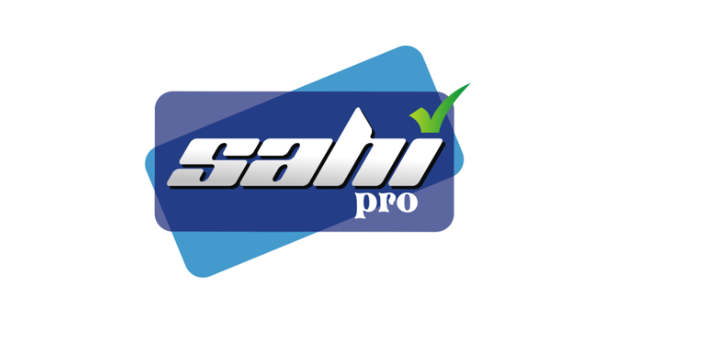
Sahi Pro is an automated regression testing solution designed for large web applications that require little upkeep. Despite UI changes, the tool maintains the test script using an intelligent accessor approach. The testing application also provides options to emailing reports to concerned staff through logging and reporting features. To experiment with Sahi Pro, coding knowledge is not necessary. Instead, it provides users with simple-to-use APIs for access. It is simpler to handle because the script execution uses a DD CSV file.

Watir, or Web Application Testing in Ruby, is an open-source package that enables OLE-based testing without the use of an external server by utilizing the Ruby programming language. Watir's sophisticated interface makes it simple for users to write code without the need to read voluminous manuals.
When a window from a linked domain is opened, WATIR's Attach Method ensures that the original application window will stay connected. The tool supports multiple operating systems and browsers. Watir's ability to offer a variety of user interaction capabilities for website testing, such as clicking links, completing forms, and verifying texts, is another intriguing feature.
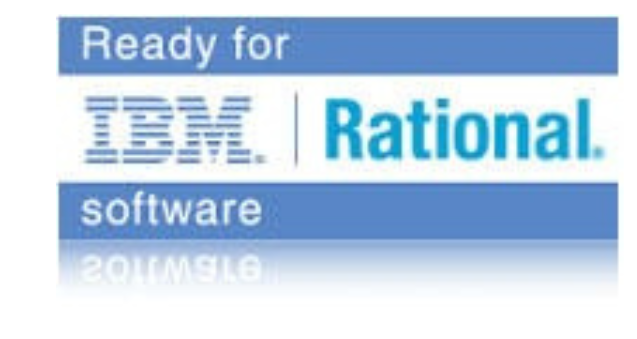
IBM's Rational Functional Tester, sometimes known as RFT, is a tool for automating software testing. It supports web-based,.NET, Java, Siebel, SAP, terminal emulator-based, and PowerBuilder applications and provides automated testing for functional, regression, GUI, and data-driven testing.
In addition to ScriptAssure technology, which enables testers to automate tests that are resilient to frequent UI changes, IBM Rational Functional Tester has a natural language script editor, generated screenshots, and other tools for simple test visualization and editing. Additionally, it offers a user action recorder, several customization choices, script upkeep options, the ability to share functional tests with other team members, and the ability to execute them in hybrid environments.

An open-source Java program called Apache JMeter is used to evaluate the functionality, performance, and load of online applications. It has been widened to test additional features including how well a server handles multiple concurrent user requests. The Swing graphical API-based JMeter graphical user interface is straightforward to use and can be used on any platform that supports a Java virtual machine, including Windows, Linux, and Mac. On several technologies, it is a fantastic tool for functional performance and regression testing.
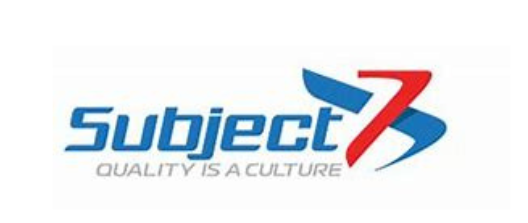
The popular cloud-based enterprise-level regression automation testing program Subject7 is used to test desktop, online, and mobile apps. The technology is accessible for programs prepared for public, private, and hybrid clouds and supports high-scale parallel execution. The tool excels on both of these metrics, whether you view it from a technical or financial angle.

The QA team will like using TimeShiftX, one of the most cutting-edge regression automation testing solutions available. By shortening test cycles and using fewer resources, this tool's USP gives businesses a competitive edge. Additionally, it enables businesses to deliver the software quickly, which explains why TimeShiftX is very well-liked by testers.
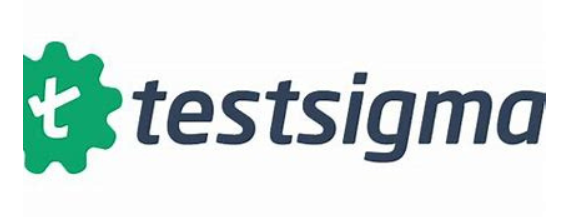
One of the best automated testing tools for regression testing is Testsigma. This tool's creation of scriptless test cases in plain English is one of its benefits. This application can also support CI/CD workflows with Jenkins, JIRA, Slack, and other platforms. The freedom to create original functions and provide requirements for regression test suites is another feature of Testsigma.
Regression testing automation tool Cerberus Testing is 100% open-source, supports web and mobile APIs, and does much more with less coding. The software is accessible via a web interface and is hosted in the cloud; advanced development knowledge is not necessary. This program is a favorite among testers since it has reusable test modules and test information.
Regression testing tool knowledge is merely theoretical education. To acquire the desired results, though, you must be aware of the best practices to adhere to when utilizing regression testing tools.
The degree of new features or upgrades in a program determines how much regression is necessary. Extensive Regression tests of all application test cases are necessary if the fix or
upgrade is significant. You can automate testing of all repetitious test cases because the upgrade will result in a considerable number of test cases. The test suites need to be
continuously updated for the newly introduced features.
To test every aspect of an application's functioning, the next step is to choose the right Regression test cases. Finding suitable test cases based on the updates and the affected
areas of the program, however, is the most successful strategy when the app's changes are significant. You will be able to save money, time, and effort as a result.
These tests are repetitive, thus test cases can be automated to make it simple to run just a certain collection of test cases on a new release.
Regression test cases must be carefully chosen to ensure that the most functionality is covered by the fewest possible test cases. To accommodate newly introduced functionality, these test cases need to be continually improved.
When the application's scope is exceedingly broad and the system is constantly receiving updates or patches, it becomes very challenging. In these situations, it is necessary to run only a few tests in order to reduce testing time and expense. These carefully chosen test cases are chosen based on the system improvements made and the areas where they can have the biggest impact.
Planning a sound strategy while keeping specific factors in mind is crucial if you want to get the most out of your regression test suites. The following are some tips to help you develop a successful regression tests strategy:
1. Re-run each test that is currently in place: Test engineers must recheck problem regions after the product release. This can frequently be difficult, especially when manual testing is involved. Here, automated testing is advised.
2. Run critical tests first: The majority of the time spent on regression testing should be spent redoing tests that relate to the application's core features.
3. Next, look through the challenging features: Numerous programs contain sophisticated and intricate components, which might lead to issues. The functionality must be of the highest caliber even when it is difficult to understand or comprehend.
4. Exploratory testing is carried out: Learn the new features of the software version and create and run new tests for them. Numerous new issues will be identified during this testing.
Automated testing can help you increase output and spend less time and effort conducting tests. It is feasible to run tests considerably more quickly and productively by using automation scripts.
Random testing must be done, and that's the last thing. Software testing is done at random from a user's perspective. Testing at random is crucial because there are always issues of some kind.
Regression testing and retesting are frequently confused. That is untrue; each of these phrases has a different meaning.
Retesting is literally translated as "test again" for a particular purpose. Retesting is done when a bug in the source code is repaired or when a specific test case needs to be run again since it failed during the final execution. It is done to ensure that the flaw has been addressed and that no new bugs have resulted from it.
Regression testing is done to determine whether the upgrades or changes have introduced any new flaws in the functioning of the current systems. This action would guarantee that the software is unified.
Additional distinctions between these two terms are as follows:
| Retesting | Regression testing |
|---|---|
| It is built specifically for fixing defects. | Regression testing is done mainly to verify if code changes have impacted other functionalities. |
| Retesting doesn’t check the other versions and only verifies if the functionalities are restored. | It focuses on previous versions, and it tests if the old release’s functions are still working as needed. |
| It is a planned type of testing. | Regression is a generic test. |
| This testing is for failed test cases. | It is for passed-test cases. |
| It checks specific defects, so it cannot be automated. | Automation is a reliable testing form in regression, as manually doing repetitive testing is time-consuming. |
| Retesting is not compulsory in testing, as it is required only when bugs are found. | Regression is always a part of testing, as every time a code is changed, this test must be conducted to stabilize the product. |
| It is high-priority testing as it focuses on known issues. | This is low-priority testing, as it is overall testing of possible defects. |
| This testing is not time-consuming as it works on a specific defect. | As it involves a large area of the software, hence, it is time-consuming. |
| It determines defects with the same data and environment with a different input and a new version. | This testing can acquire cases from user manuals, defect reports, and functional specifications. |
| Retesting cannot be conducted without the first testing. | It is done when changes and modifications are obligatory in the existing project. |
Additionally, automation is a key component of regression testing since it enables you to maximize the potential of your test case capabilities. Regression testing additionally eliminates all underlying side effects brought on by code changes in the most economical manner doable.
When there are numerous releases, numerous regression cycles, and numerous repetitive tasks, automated regression testing is performed. You can only test this procedure manually once or twice, and it typically takes longer. However, since automation needs developing a script before it can be executed, testing can be done repeatedly. During the fresh build, the testing team does not immediately begin using automation. When the new version and modifications begin, there are manual and automation teams.
Here's how to perform automated regression testing which is a step by step process:
1. The manual unit verifies all specifications and determines the impact area. Following this procedure, they send the automation department's requirement test bundle.
2. While the automation unit builds the script and automates the test case, the manual team starts testing the new modules.
3. The automation team determines which cases will enable automation prior to employing this type of a regression test.
4. Scripts are created from those regression tests based on which scenarios can be automated.
5. The automation team uses regression cases to aid in the scripting process because they lack product, tool, and app knowledge.
6. The automation team will run the test scripts on the new app whenever they are finished.
7. The test's outcome after execution indicates whether it was successful or not.
8. If the test fails, it is manually verified again, and if the problem still persists, it is reported to the appropriate developer.
9. The automated team must run the script again after the bug has been repaired, and the issue and the impact area are passed back to the manual tester for additional testing.
10. This process keeps going until every new regression feature has received a Pass status.
• Since the task is completed by the tools and they never get tired or bored, accuracy is always present.
• The test script is transferable across different releases.
• By employing automation, it is feasible to run all of the written test scripts concurrently or in parallel.
• Release after release, the number of regression test cases grows, but we don't need to increase the automation resource because certain regression cases have already been automated.
• Because the execution is always quicker than the manual method, it saves time.
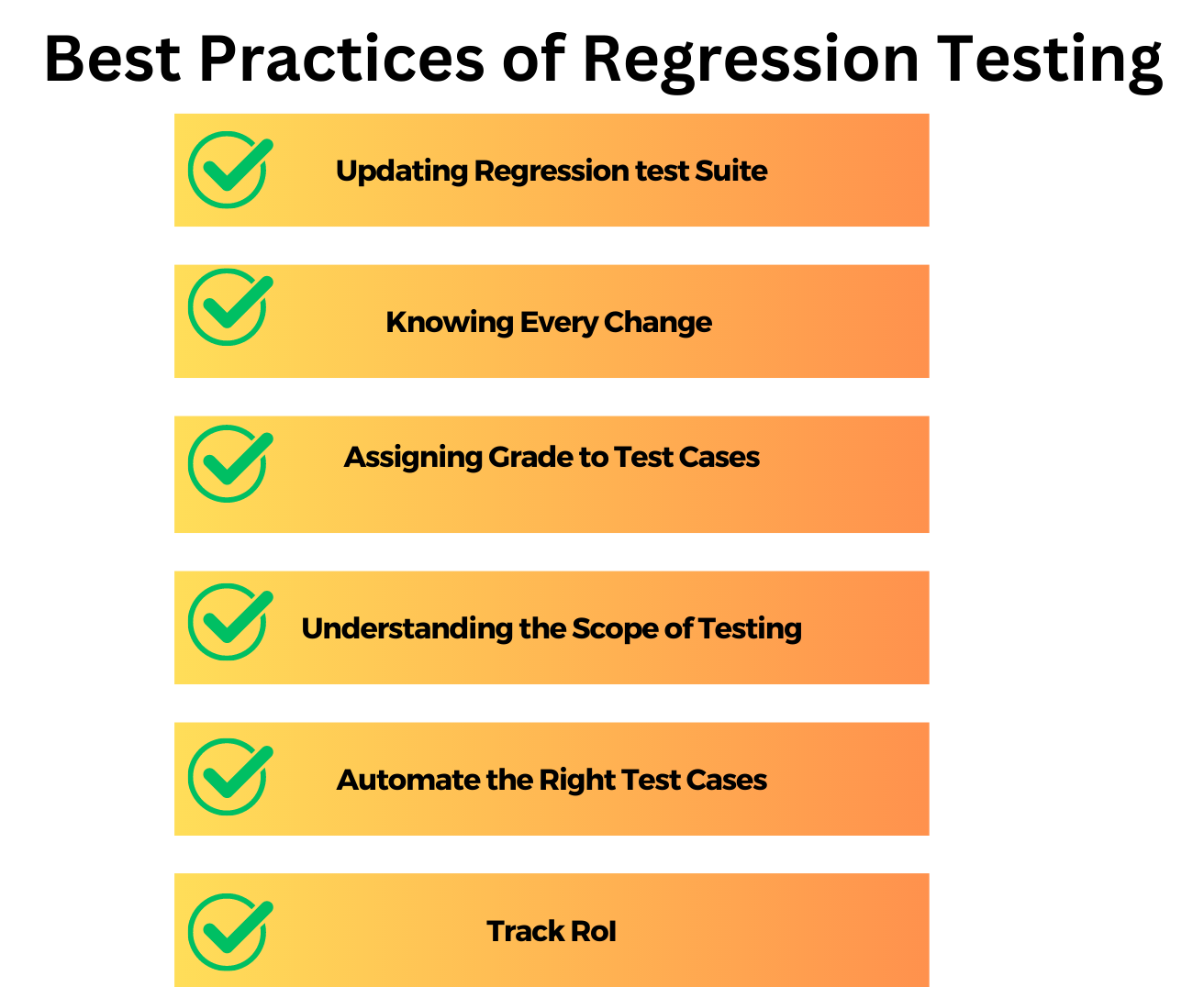
After talking about the complexities, let's look at some best practices that must be adhered to.
• Create thorough test case scenarios to regress the testing methodology.
• Regression testing should be carried out using the test case file, which should be kept up to date with new cases.
• Establish a regular process for performing regression testing.
• Determine the application areas or functionality that are at high risk as a result of recent upgrades or changes.
• Regression testing should be combined with both functional and non-functional testing.
• Regression testing should be done following each successful compilation of new code.
• Based on the risk considerations surrounding the application's business model, develop the regression testing strategy.
• Execute the desired regression testing activity and check its accuracy against the anticipated/previous response.
• Automated regression testing can help to verify that new code changes do not disrupt current functionality and that any regressions are swiftly found and corrected. Integrate automated regression testing into your continuous integration or delivery workflow.
• Establish a regression testing procedure and make sure that everyone working on the project is aware of it. By doing this, you can be sure that you and your team will take the necessary actions to thoroughly test all changes.
• Determine whether updates or modifications made to the application's existing modules will affect how well they perform; this will help you concentrate your testing efforts during regression testing on those areas.
• Use manual and automated tests to confirm that functionalities have not been negatively impacted by modifications or upgrades; this will help you identify any regressions that the changes or upgrades may have brought about.
It assists in locating bugs before the deployment deadline. The number of test cases will increase as your program becomes more complex, though. You therefore demand a cloud-based testing infrastructure that can expand as your testing needs do. Platforms for test execution and orchestration like LambdaTest assist you in doing that. For your test automation requirements, it provides a cloud-scalable infrastructure of more than 3000 actual browsers, devices, and OS combinations.
Here's how to choose the appropriate regression test case.
• test examples that exhibit common flaws
• each and every integration test
• test scenarios that ascertain the product's primary capabilities.
• Pick the case for boundary value analysis.
• positive test results.
• Pick challenging exam cases.
• cases tailored to your company's needs.
• Rank them in order of importance.
• cases for tests in the fault-prone locations.
Regression testing in agile environments, where the code is frequently changing, requires configuration management. Be sure you follow these guidelines to ensure successful regression tests:
• A configuration management tool should be used for the code that is being regression tested.
• During the regression test phase, no coding changes may be made.
• Developer changes must not affect regression test code. Regression testing databases need to be segregated. No database modifications are permitted.
Agile is a flexible strategy that employs an incremental and iterative process. In a brief iteration known as a sprint, the product is built over the course of two to four weeks. Since there are many iterations in agile, testing is important since new functionality or code changes are made during iterations.
From the beginning, the Regression test suite should be prepared, and it should be updated after each sprint.
Regression checks in Agile fall into two categories:
• Sprint Level Regression
• End to End Regression
Sprint Level Regression is typically performed for new features or improvements that were completed in the most recent sprint. The test suite's test cases are chosen based on the newly implemented functionality or enhancements.
End-to-End Regression consists of all the test cases that need to be repeated in order to thoroughly test the product's fundamental functionality.
Agile uses brief sprints, and as the project progresses, it becomes increasingly important to automate the test suite. In addition, test cases must be run again quickly. The execution time and defect slippage are both decreased by automating the test cases.
The testing team must simultaneously define the test automation framework when choosing automated regression testing. Testers can offer the automated test cases a clear structure by designing the test automation framework. Here are some examples of how an established architecture is essential for automated testing:
• A designated quality assurance specialist and their preferred automation testing tool
• Test cases and test suites are appropriate and pertinent components of a regression testing organization.
• a straightforward testing script for performing regression testing that is scalable and adaptable to new test cases
• QA specialists finish integration activities before creating a framework for test automation so they may concentrate entirely on running the script for regression testing.
Developers are prone to making common errors that can be avoided with sufficient caution. Here are some mistakes you should steer clear of:
• Regression testing should always be performed following a code release, change, or issue repair.
• Any automation tool will perform arbitrary test cases and suites if a regression testing framework is not defined or adhered to, which will cost time, money, and bug identification.
• failing to specify a goal and hiding it from all project participants.
• Regression testing is time-consuming and expensive because the same test cases must be performed over and over again, yet it is important to make sure the program works after an upgrade to a newer version.
• not choosing manual testing over automated testing.
These are the most typical errors that any expert can make when performing regression testing.
• Regression testing raises the level of product quality.
• By performing this testing, you may make sure that the existing functionalities and features haven't been altered by changes and problem fixes.
• Instead of relying solely on manual testing, you have the option to use automation technologies and obtain quicker results.
• It ensures that after the problems are fixed, they won't come up again.
• It enables effective construction product development.
• With this testing, you may obtain great user satisfaction.
• Overall, it preserves the software's stability.
• Regression testing takes time if it isn't automated.
• Every time a piece of code is changed, you must perform.
• The agile sprint may be impacted by a very repetitive process.
• needs you to write difficult test cases.
Manual regression testing takes a long time to complete. Automation is preferred because of this, but to do it, you need sophisticated infrastructure and tools, which can be very expensive.
Regression testing success depends on choosing the right testing strategy. Even if you have knowledgeable personnel and equipment at your disposal, you will still have trouble if you don't have a strategy for when and how to approach or carry out regression testing.
The kind of test case suite you have developed will determine how well regression testing works. The constructed regression suite needs to be updated after each build and release. Regression testing would not be possible without that because it would be difficult for testers to remember each change. There is no other way to cover every aspect. Consequently, the vast breadth is a tremendous task.
The number of test cases grows as you go from the first build to the second and so on. The regression test suite will grow in complexity as a result. You will constantly need to test both the new and the old scenarios.
When new features are implemented, a regression test suite needs to be continuously improved. As a result, there are often different numbers of test cases, and new tests must be run alongside older tests, taking a long time to finish. Implementing parallel testing can be a workable approach because it enables you to execute test cases concurrently across several OS and browser combinations, thus cutting lead time.
One must ensure that appropriate maintenance is carried out in order to manage the time and complexity of regression testing. For instance, how would it impact the current regression tests if a design update required moving the shopping cart to the right menu? The tests would need to be totally rewritten even though the upgrade could just necessitate modest changes to the front end.
• Setting a regression-testing program on autopilot is not a foolproof solution, as is the case with most automated testing; in most cases, conscious inspection and input are still required to guarantee that your tests catch all the defects they should. The testing process itself may become static if the same set of tests is run night after night, consistently. When developers eventually figure out how to pass a fixed library of tests, your typical set of regression tests may unintentionally wind up testing very little at all.
• In some ways, maintaining compliance with requirements specifications as you develop your program is similar to clearing a path across a minefield. Professional minesweepers only need to clear one road, draw up clearly defined boundaries, and protect that path in order to move safely across enemy territory. It's unlikely that someone will place a new mine on it once there are enough soldiers there to protect it, which in this example would be your regression testing. This consistently clear path, however, says nothing about all the other mines that might still be in the ground, either old or new, waiting to be stepped on by careless citizens.
• The entire purpose of performing regression testing can be defeated if it becomes overly automated and routine. By unintentionally neglecting large portions of the application, you run the risk of assuring a clear software development trajectory for yourself and your development team while exposing your end users to undetected bugs at their own risk. Of course, it is simpler to proceed down a single route of least resistance than to pause after each new step and sweep the entire program, but it is worthwhile to extend your regression testing by periodically scanning a bit further out. And frequently, that only entails adding some traditional manual checks to your automation.
• Regression testing must be viewed as a component of a thorough testing methodology that is economical, effective, and incorporates enough variety to prevent any elements of your software applications from going unchecked, such as well-designed frontend UI automated tests alongside focused unit testing based on wise risk prioritization. Regression testing is now recognized as a crucial component of a dynamic, iterative development and deployment schedule in many Agile work settings that use workflow techniques like XP (Extreme Programming), RUP (Rational Unified Process), or Scrum.
• However, regardless of the software development and quality assurance procedures your company employs, if you take the time to carefully plan ahead, creating a clear and varied testing strategy with automated regression testing at its core, you can help keep projects within budget, maintain the productivity of your team, and, most importantly, prevent unexpected bugs from harming your products and your business's bottom line.
After reading this article, we hope you have a solid understanding of what regression testing is.
Regression testing is essential for raising the level of a product's and a user's overall quality. The correct regression testing tools may effectively find every fault that has surfaced and fix it early in the pipeline.
Regression testing in Agile also has a wide range of technical and commercial benefits. As a result, you will have greater control over the budget, procedure, and error mitigation of your product the more your company invests in planning and carrying out regression testing.
Regression tests save you time and effort even if they use a lot of resources. The agile software development lifecycle makes life easier for developers and testers while producing the highest possible output.
Regression testing is a kind of software testing used to ensure that an application upgrade or recent change hasn't negatively affected the functionality that are currently in place. Regression testing is started as soon as the developer completes adding new functionality to the program or resolving an existing bug. Due to dependencies between the two modules of code, it frequently happens that one module will be impacted when another is updated or upgraded.
Regression starts whenever a programmer patches a bug or adds new code to the system to add new features.
• The recently introduced and current functionality may both have a lot of dependencies.
• To ensure that the unmodified code is not impacted, this is a quality control measure to see if the new code is compatible with the older code. The testing team is typically tasked with verifying any hurried system changes.
• In this case, testing that just affects the application area is required to finish the testing process on schedule while covering all the key system components.
Given below are the various types of Regression :
• Unit Regression
• Regional Regression
• Partial Regression
• Complete Regression
• Selective Regression
• Progressive regression
Retesting entails testing the feature or bug once more to check that the code has been fixed. If it is not fixed, the defect must be reopened. Defect is closed if it is fixed.
Regression testing is the process of evaluating your software application after a code update to check that the new code has not impacted other areas of the software.
In regression testing, we often select test cases from the existing test suite, so we don't need to compute their expected output, and it can be readily automated as a result. Automating the regression testing process will be extremely effective and time saving.
The following are the most often used regression testing tools:
• Selenium
• WATIR (Web Application Testing In Ruby)
• QTP (Quick Test Professional)
• RFT (Rational Functional Tester)
• Winrunner
• Silktest